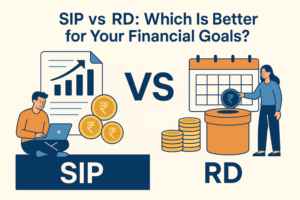
Gold has always been more than a shiny metal. It carries history, trust, and stability in every ounce. From royal treasuries to modern trading platforms, it has symbolized value that never fades. For centuries, people turned to gold when uncertainty rose and currencies shook. Even today, when digital money dominates and global markets shift overnight, gold remains a core part of serious investment discussions as a hedge against economic uncertainty and inflation.
A Historical Store of Value
Gold has stood the test of time. Ancient civilizations used it as currency, temples stored it as divine wealth, and kings flaunted it as a sign of strength. Every major empire, from Egypt to Rome to the British monarchy, saw gold as the ultimate form of money. When paper currencies came into existence, they were often backed by gold. The Gold Standard made global trade predictable and reliable. Even after that system ended, gold never lost relevance.
The Modern Investor’s Perspective
Modern portfolios look different, filled with stocks, bonds, crypto, and real estate. Yet, gold quietly sits at the foundation of every serious investor’s long-term plan. Why? Because it doesn’t follow the same rules as other assets. When markets rally, investors often trim their gold holdings. But when markets tumble, they rush back to it. That pattern proves that gold isn’t just a commodity; it’s emotional insurance. It provides balance in portfolios and comfort in unpredictable times. Today, gold investments come in multiple forms: physical bars, coins, digital gold, sovereign bonds, and ETFs.
Hedge Against Inflation
Inflation erodes money’s value, and that’s where gold shines brightest. When prices rise, the cost of living increases, and the value of currency falls. Gold, however, tends to move in the opposite direction. Over decades, history shows gold prices climbing whenever inflation spikes.
For example, in the 1970s, when inflation rates soared globally, gold’s value multiplied several times. The pattern repeats in every economic cycle. Gold works as a shield. It doesn’t depend on interest rates or government policy.
Portfolio Diversification
Diversification is the golden rule of investing: never put all eggs in one basket. Gold strengthens that rule. Its movement rarely mirrors stocks or bonds. When markets correct, gold often climbs, offsetting portfolio losses.
That inverse relationship helps investors sleep well during turbulent phases. Even a small percentage of gold can balance overall returns. Professional investors, pension funds, and central banks follow this principle. Their goal is stability, and gold delivers it.
Global Liquidity and Acceptance
Gold’s universal recognition makes it unmatched in liquidity. Every country values it. Every financial system accepts it. That global demand gives investors the confidence that gold can be converted into cash almost instantly. During financial emergencies or relocations, gold remains the easiest asset to liquidate.
Its prices are transparent, set by global markets, and monitored in real time. No other tangible investment enjoys this level of acceptance. That’s why gold is not only valuable but practical. It serves as global money without requiring any translation.
Safe-Haven Asset During Crises
When global markets fall apart, gold usually rises. It acts as a stabilizer during storms, political, economic, or financial. Think about the 2008 global recession, the pandemic shock in 2020, or geopolitical tensions that rattled global markets.
In every case, gold surged. Investors flocked to it as a safe haven when fear dominated trading floors. This reaction isn’t accidental; it’s behavioral. Gold feels safe because it is real. It isn’t tied to a company’s debt, an interest rate policy, or an unpredictable digital code.
Protection Against Currency Depreciation
Currencies lose value over time. Inflation, trade deficits, and government policies can weaken a nation’s currency against others. Gold helps offset that loss. As domestic currencies fall, gold prices in that currency rise.
This keeps purchasing power stable for investors who own gold. It’s one of the oldest tricks in wealth preservation. For investors in developing economies where currency swings can be sharp, gold becomes a personal stabilizer.
Tangible Asset With Intrinsic Value
Gold is physical. You can hold it, touch it, and store it safely. That tangibility brings comfort that digital or paper assets cannot replicate. Its intrinsic value stems from rarity, beauty, and wide usability. It never becomes worthless because it has both emotional and industrial demand.
No balance sheet or quarterly report affects it. That physical nature also makes it useful during systemic shocks. When banks shut down or systems fail, gold stays accessible.
Strong Demand from Jewelry and Industry
Investment demand isn’t gold’s only support. Jewelry consumption accounts for a large share of global gold usage. In countries like India, gold jewelry isn’t just an ornament; it’s wealth, culture, and tradition. Beyond jewelry, gold plays a vital role in technology and medicine. Its resistance to corrosion and excellent conductivity make it useful in electronics, satellites, and precision tools. This dual demand, from sentiment and science, ensures consistent price support. Even when investor appetite slows, industrial and cultural demand keep the market active.
No Counterparty Risk
Every paper asset carries dependency. Stocks rely on company performance. Bonds rely on issuers’ ability to repay. Even cash relies on central bank credibility. Gold depends on none of these.
It has zero counterparty risk. Its value doesn’t depend on anyone’s promise. That independence makes it uniquely powerful in uncertain financial environments.
Long-Term Capital Appreciation
Gold’s story is one of steady growth. Short-term fluctuations happen, but its long-term trajectory remains upward. In the past two decades, gold prices have multiplied several times. Those who accumulated during calm periods benefited significantly when volatility returned.
It’s not about speculation, it’s about patience. Unlike volatile investments that swing wildly, gold compounds quietly. It may not offer dividends or interest, but it delivers appreciation that spans generations.
Central Bank Reserves and Policies
If central banks, the largest financial institutions in the world, trust gold, individual investors have even more reason to do so. Central banks hold gold as part of their reserves to strengthen their balance sheets. When global uncertainty grows, these institutions increase gold holdings.
It’s a signal of confidence in its value. According to global data, central banks collectively hold thousands of tonnes of gold. Their buying trends often indicate long-term bullishness for the metal. When they accumulate, prices tend to rise steadily.
Why Gold Deserves a Place in Your Portfolio
Gold is both ancient and relevant, emotional and strategic. It connects history with the present, luxury with logic. Its stability during inflation, its liquidity during emergencies, and its independence from external risks make it unmatched. It offers balance in portfolios that rely heavily on market-driven instruments.
Adding gold isn’t about chasing quick gains; it’s about ensuring long-term resilience. Whether the goal is wealth preservation, diversification, or crisis protection, gold fits naturally. It has survived every economic shift humans have witnessed, adapting while remaining fundamentally the same. The modern investor can access gold through many forms, such as physical, digital, or mutual funds linked to bullion.
FAQs
Q1: Is it better to invest in physical gold or digital gold?
Both options work depending on the investor’s goal. Physical gold offers tangible security and emotional satisfaction. Digital gold brings convenience, safety, and easy liquidity through apps or platforms. Many investors balance both forms for flexibility and peace of mind.
Q2: How much of my portfolio should be allocated to gold?
Financial planners generally recommend a 10–15% allocation to gold. The aim is to protect wealth rather than chase high returns.
Q3: Does gold perform well during stock market crashes?
Gold often rises when equity markets fall. History shows it performs strongly during recessions, wars, or global crises because investors shift their capital toward safer assets. It acts as a cushion when volatility increases across other investment classes.
Q4: What are the risks involved in investing in gold?
Gold prices fluctuate in the short term based on international markets, interest rate trends, and currency movements. Physical gold requires secure storage and insurance. Yet, over long periods, it remains one of the least volatile assets for wealth preservation.
Q5: How does gold compare with other safe-haven assets like bonds or silver?
Bonds provide fixed income and stability, while silver carries higher industrial demand and price swings. Gold sits in between, steady, universal, and timeless. It’s trusted by governments, institutions, and individuals alike as the ultimate store of value.







